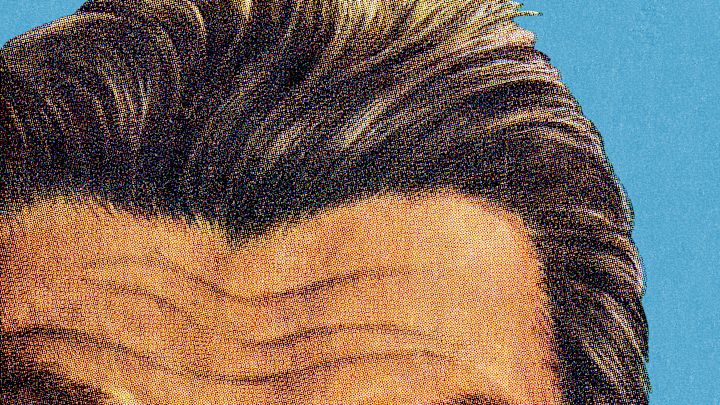A widow’s peak is a noticeably v-shaped point to the front of a person’s hairline, with the tip of the v typically aligning with the center of their forehead. As many as a third of people have a widow’s peak. But where did that strange moniker come from?
Superstition and Omens
It’s a name with a long heritage: The Oxford English Dictionary unearthed the earliest record of widow’s peak way back in 1681, when English botanist Nehemiah Grew used it in a catalog of “natural and artificial rarities belonging to the Royal Society and preserved at Gresham Colledge” to describe fabric used to cover women’s genitals that was “A ¼ of a yard deep, and shaped like a Widows Peak.” Before that, the late 16th-century expression widow’s lock was used to describe a loose curl or tuft of hair on a person’s forehead.
In folklore and superstition, the presence of a widow’s lock or widow’s peak was seen as an omen: It was thought that someone born with those features would be destined to lose their spouse at an earlier than expected age.
That idea seems to be based on the similarity between the hairline and the pointed shape of a biquoquet, a traditional widow’s headdress or hood—part of the weeds, or mourning clothes, that a bereaved wife was once expected to wear as a symbol of her loss. (Weeds, per the OED, was an Old English word for an item of clothing.)
A Queen’s Influence
Some explanations point to Anne of Brittany, the medieval queen of Charles VIII of France, as the origin of both this v-shaped adornment and its connection to early widowhood.

According to the story, Anne’s royal costumier designed a v-shaped bonnet as part of her funeral weeds after King Charles’s death in 1498. Given that Anne was just 22 years old at the time (and quickly remarried Charles’s cousin, Louis, the new king of France, the next year), she is said by some to have established a superstition that anyone with a v-shaped hairline similar to her widow’s hood was destined not only to lose their partner at an early age, but to remarry quickly afterward.
Famous Widow’s Peaks

The term widow’s peak may have originated with women and their dress, but anyone, male or female, can have one: Some famous figures past and present with widow’s peaks include:
- Leonardo DiCaprio
- Fran Drescher
- Chris Hemsworth
- Keanu Reeves
- Marilyn Monroe
- Andrew Jackson
- Gary Cooper
- Brooke Shields
- Ronald Reagan
Why do so many vampires have widow’s peaks? |
|---|
When you think of a vampire, it’s likely the image you see involves a tall, cape-wearing man with a prominent widow’s peak. According to Stanley Stepanic, Dracula expert and assistant professor in the Department of Slavic Languages and Literatures at the University of Virginia, there’s a simple reason for that. “When the original Dracula play was brought to Broadway in 1927, the role of Count Dracula was played by Hungarian immigrant Bela Lugosi ... It was his natural hairline,” Stepanic told the university’s website. Lugosi’s hairline and Eastern European accent became a stereotypical vampire’s hallmarks after the actor played Dracula on the silver screen in 1931. |
Learn More About Language:
